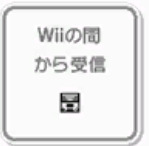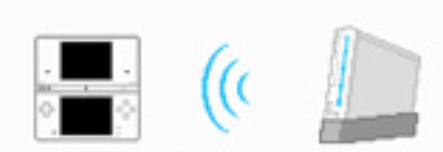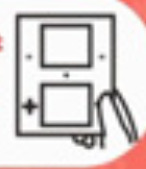#Depicting: Nintendo DSi
Explore tagged Tumblr posts
Text
Hobonichi no Kenkou Techou ほぼ日の健康手帳


from https://www.youtube.com/watch?v=SJj41R_9nKA&ab_channel=EvieMelody
#Hobonichi no Kenkou Techou#ほぼ日の健康手帳#Depicting by: Nintendo DSi#Depicting: Nintendo DS stylus family#Depicting: Nintendo DSi
2 notes
·
View notes
Note
*a parcel wrapped in sunflower yellow paper with three postage stamps (one depicting Dog Violets from 1967, another depicting a Blackbird from 1966 and a last one depicting Primroses from 1967) and a rubber stamp with the words "First Class" and "Caution: Fragile" has been delivered to U.N.I.T. HQ by the Royal Mail. It contains a yellow Nintendo DSi XL and stylus, a game cartridge for Might and Magic: Clash of Heroes, a charger, an SDHC card with the entirety of The King In Yellow short story anthology in MP3 format and three neon yellow origami cranes*
Ah. I’ll give this to them once they get better-
0 notes
Text
Of Triangles And Letters
Collectors who are accustomed in buying and selling games for Nintendo consoles surely must've noticed two distinctive features: the presence of small, coloured triangles on one corner of box/manual's covers and the letter-based codes which are easily found at the side of a cartridge's label. These traits aren't purely cosmetic, but a very straightforward way to classify different games based on their language! These are mainly employed when it comes to cartridge manufacturing and distribuition; yet, these informations are also quite useful for collectors if they're looking for a game in a specific language, or they're shopping for something compatible with their region-exclusive consoles (and in some cases they're also advantageous when it comes to spotting bootlegs). While the triangle-based system is exclusive to European releases, the identification codes are international and they've been used since the NES era! The following is a handy-dandy guide on how to recognize and decipher them.
Let's start with the coloured triangles! This European-exclusive measure has been adopted by Nintendo Of Europe (also known as NOE) as disclosed in an interview published on the british periodical Nintendo The Official Magazine (Issue 21; 21st Oct. 07) to ease up shipping throughout the continent. It makes sense if you imagine a big Nintendo warehouse in Germany (where NOE is located) that supplies many countries and employees must figure out where to ship the games without breaking their seal; all it takes is a quick glance at the small yet visible triangle to know their destination. It often happens to spot a differently-coloured triangle at european game shops (especially if they're dealing with used material), but this doesn't mean the games have been illegally imported: the EU commerce doesn’t have restriction laws regarding videogame languages. The presence of a triangle, if anything, guarantees the game has been bought inside the EU; the lack of such will, accordingly, mean that the game is either american or japanese, which will probably mean it won't work on region-locked consoles such as the Nintendo Wii or GameCube! Old games such as the NES, SNES, N64, Game Boy Classic/Color and Game Boy Advance will only show the triangle on the manual cover; from the DS/GameCube onwards, instead, the triangle is present also at the bottom-right corner of the box. The system as it is nowadays has been used since 2001.
There are 49 colours employed in total, but here's a list of the most common ones:















Onwards to the letter-based identification codes! Unlike triangles, these are used worldwide to distinguish where the game was assembled and what languages it supports. They are a way to find out the game’s language and factory location even without popping the cartridge or CD in the console, so if certain games need to be recalled because of a bug or other reasons, sellers just need to know the code. They are not only shown on boxes and manuals, but also on the cartridge's label (in particular, western Game Boy and Game Boy Color games will depict it on the left silver band; japanese games instead just show it at the top) and even on its internal board!
There are currently two known versions of identification codes. The older one shown on NES, SNES, and launch-titles Game Boy games have the layout XXX-XX-XXX; from the N64/GBC onwards, the layout is XXX-XXXX-XXX and it's the current version used.
The first three letters specify the console that game is made for. Variations include:
DMG - Game Boy Classic (named after its working title, Dot Matrix);
CGB - Game Boy Color;
AGB - Game Boy Advance;
VUE - Virtual Boy;
NTR - Nintendo DS;
TWL - Nintendo DSi;
LNA-CTR - Nintendo 3DS (it's the only console which shows 6 initial letters);
NES - Nintendo Entertainment System;
SNS - Super Nintendo Entertainment System;
NUS - Nintendo 64 (named after its working title, Nintendo Ultra);
DOL - GameCube (named after its working title, Dolphin);
RVL - Nintendo Wii (named after its working title, Revolution).
The code's second portion consists of two letters in the old layout and four letters in the new layout; in reality, old carts have the full, four-lettered identification code printed on the internal board and only show part of it on the label. In both cases, this middle, four lettered portion is used to identify the game printed on the cart (with the first three letters) and the language of that game itself (with the last, fourth letter). For example: an italian cart of Pokèmon Blue will show, in its code's middle portion, the letters APEI. APE is the code for all Pokèmon Blue games, and I indicates the game is in italian. For what it concerns language letters, these are the main ones:
P - European/Pal;
I - Italian;
F - French;
E - English;
J - Japanese;
S - Spanish;
D - German.
Different from the language reported in the game, the code's last three letters help us identify which country that game was distribuited in. Why is it different? Sometimes, a game distribuited in Italy or France can still be a multilanguage PAL cart, showing a P instead of an I or F in the middle part's fourth letter. This is pretty useful, because it may happen to come across a game sold in Germany but still with multiple language choice, if P is in the code. Most common variations are:
ITA - Italy;
UKV - United Kingdom;
FRA - France;
FAH - France and Holland;
HOL - Holland;
ESP - Spain;
FRG - Austria;
NOE - Germany (it spells “Nintendo Of Europe”);
GPS - Greece, Portugal;
SCN - Scandinavia;
SWE - Sweden;
EUR - Europe (on most recent cartridges/CDs);
CEE - Europe (on older cartridges such as NES ones);
USA - United States;
CHN - China;
JPN - Japan;
TWN - Taiwan;
AUS - Australia.
Now go and identify your games!
0 notes
Text
Dokodemo Wii no Ma



from https://www.spriters-resource.com/wii/wiinoma/sheet/68507/


From https://www.nintendo.co.jp/ds/dsiware/kdgj/index.html

From https://www.youtube.com/watch?v=9OzzzfAG3vY
#Dokodemo Wii no Ma#Depicted by: Nintendo DSi#Depicting: Nintendo DS#Depicting: Nintendo DSi#Depicting: DS stylus#Depicting: Wii
0 notes
Text
Wii Shop Channel





#Wii Shop Channel#Depicted by: Wii#Depicting: Wii Remote#Depicting: Wii Remote wrist strap#Depicting: Wii#Depicting: Wii U#Depicting: Wii Balance Board#Depicting: Wii Classic Controller#Depicting: Nintendo DS#Depicting: GameCube controller#Depicting: Wii USB microphone peripheral#Depicting: Wii remote with Wii Motion Plus and jacket#Depicting: Wii Nunchuk#Depicting: Wii Speak#Depicting: Nintendo DSi#Depicting: Wii Wheel#Depicting: Wii Zapper
0 notes
Text
DSi Menu



All from https://www.spriters-resource.com/ds_dsi/systembiosdsi/
#DSi Menu#Depicted by: Nintendo DSi#Depicting: Nintendo DS#Depicting: Nintendo DSi#Depicting: Nintendo DS game cartridge
0 notes
Text
Another Code R




Thank you ppltoast for the submission!
#Another Code R#System depicting: Nintendo Wii#Depicted: Derivative#Derivative: Nintendo Wii Remote#Derivative: Wii Nunchuk#Derivative: Nintendo DSi
0 notes